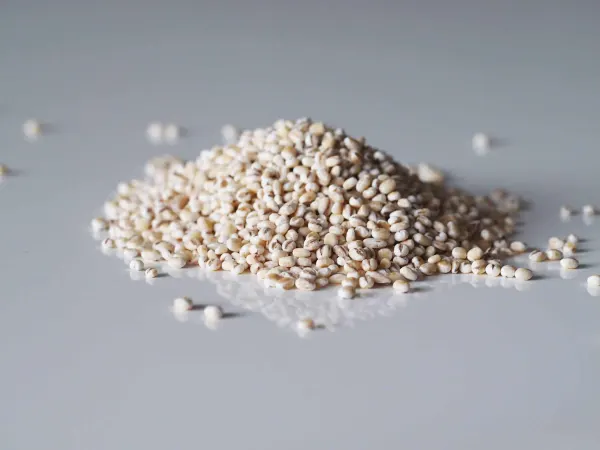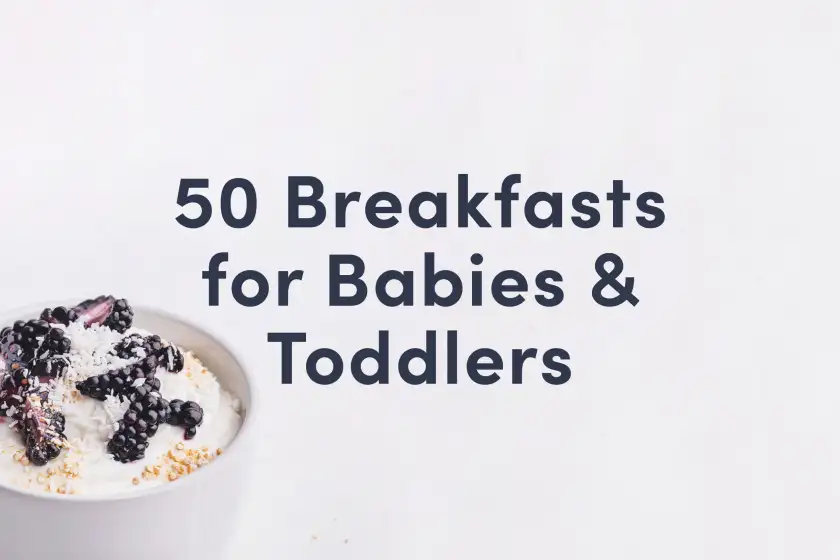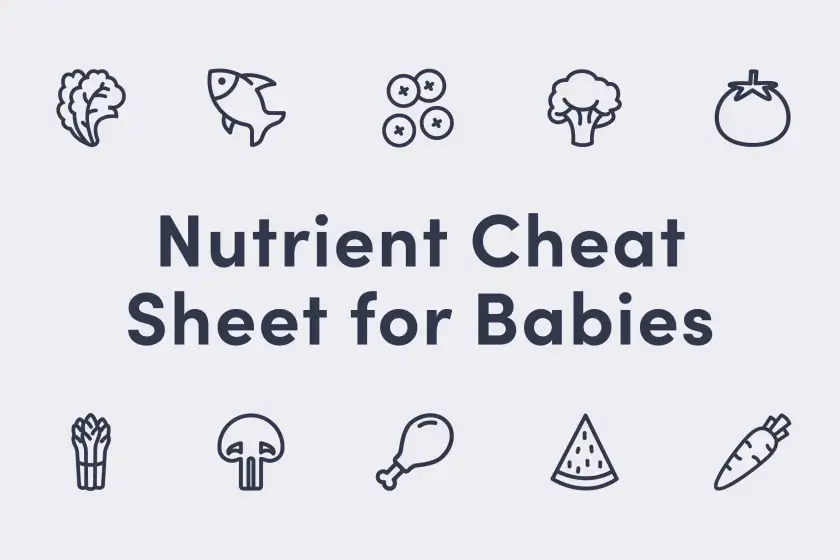Barley
Grain
Age Suggestion
6 months
Iron-Rich
No
Common Allergen
Yes

When can babies have barley?
Barley may be introduced as soon as a baby is ready to start solids, which is generally around 6 months of age. Note that barley contains gluten and is therefore not safe for those with celiac disease or non-celiac gluten sensitivity.
Barley is a family of cereal grasses that are widely cultivated for the edible seeds that we call grains. The grasses originated in Africa and Asia, where different varieties of wild barley thrived throughout the fertile lands between the Mediterranean Sea to the Yangtze River. Today, the plant grows worldwide in cool climates—from the South American plains where barley is called cebada, to the Tibetan plateau where the grain is known as jau, nas, and qīngkē and made into a staple flour called tsampa.
Is barley healthy for babies?
Yes. Barley contains good amounts of protein for cells to grow, energy from carbohydrates, and fiber for healthy digestion. It even contains a special type of soluble fiber, beta glucan, which is particularly beneficial for gut and immune health. Additionally, barley offers B vitamins (including B6 and folate), zinc, and traces of iron. This grain also benefits the body by supplying all 8 forms of vitamin E and a range of plant compounds that act as antioxidants, support heart and skin health, and more.
★Tip: Soaking whole or pearled barley not only reduces cooking time, but helps the body digest the nutrients and plant-based iron in the grains. To soak, simply rinse the grains until the water runs clear. Cover the grains with fresh water in a bowl and soak for up to 8 hours at room temperature. Strain and rinse the soaked barley again, then proceed with cooking.
Is barley a common allergen?
Yes, barley (along with other gluten-containing cereal grains) is classified as a global priority allergen by the World Health Organization. Some individuals who are allergic to wheat or rye may also be sensitive to barley.
It is important to note that a barley allergy is not the same as celiac disease. While a barley allergy may be outgrown, celiac disease requires a strict, lifelong gluten-free diet and lifestyle. A gluten “allergy” is typically a misnomer, often in reference to celiac disease.
While rare, some individuals have a condition known as food-dependent, exercise-induced anaphylaxis, which can result in a severe allergic reaction if the person exercises within a few hours after eating gluten-containing grains such as barley. These patients should avoid eating barley in the four hours before strenuous activity.
Lastly, individuals with Oral Allergy Syndrome (also known as pollen food allergy syndrome) may be sensitive to barley, particularly those who are allergic to grass pollen. Oral Allergy Syndrome typically results in short-lived itching, tingling, or burning in the mouth, and can also result in gastrointestinal distress (abdominal pain, cramping, bloating, or diarrhea) in some cases - especially if the grain was not properly digested and the proteins reach the lower GI tract intact. While uncomfortable, it is unlikely to result in a dangerous reaction.
If you are concerned that baby may be allergic to barley, talk to a pediatric health care professional before introducing barley at home. As you would when introducing any new food, start by offering a small quantity for the first few servings and watch closely for any signs of an allergic reaction. If there is no adverse reaction, gradually increase the amount over future meals.
Is barley a choking hazard for babies?
The Centers for Disease Control and Prevention names barley and other whole grains as choking hazards for babies younger than 12 months old. As barley grains are quite small, they are unlikely to be a true choking hazard as they would not block the airway, but they do pose an aspiration risk—when a small grain accidentally enters the trachea while baby eats. The body coughs reflexively when this occurs, protecting the airway. To reduce the risk, never place foods like barley into a baby’s mouth, as aspiration risk is significantly lowered when babies self-feed, and prepare and serve barley in an age-appropriate way. As always, make sure you create a safe eating environment and stay within an arm’s reach of baby during meals.
Learn the signs of choking and gagging and more about choking first aid in our free guides, Infant Rescue and Toddler Rescue.
Videos
Can babies eat gluten?
Yes, as long as a child does not have celiac disease, non-celiac gluten sensitivity, or wheat allergy. Read more in our Celiac FAQ.
Gluten is a type of protein in wheat and other grains such as barley, rye, and some oats. Gluten is edible, but it becomes problematic for individuals with celiac disease, an autoimmune disease, characterized by damage of the small intestine when gluten is consumed. Some individuals may be sensitive to gluten but may not have an allergy or celiac disease. In some cases, this may be non-celiac gluten sensitivity. Talk to a health care provider if you are concerned about issues related to gluten and digestion.
How do you serve barley to babies?
Every baby develops on their own timeline, and the suggestions on how to cut or prepare particular foods are generalizations for a broad audience.
6 months old +:
Barley porridge is a simple way to introduce the grain to baby, and makes an excellent vehicle for new flavors: your favorite spices, mashed fruits and vegetables, or finely ground nut, for example. You can also use barley flakes (rolled barley) or barley flour to make pancakes or breads. Offer a strip of crispy toasted bread about the size of two adult fingers pressed together, or the end of a crusty loaf of bread (read why the ends are often safer) for baby to munch on. Just know that bread, when moistened by saliva, can stick to the tongue and to the roof of the mouth and cause gagging.
9 months old +:
Continue to serve barley porridges, pancakes, and breads, as well as meatballs and patties with cooked barley mixed in. Offer these foods cut into bite-sized pieces to help babies practice their developing pincer grasp, where the index finger and thumb come together to pick up smaller pieces of food. Use barley flakes to add grip to slippery fruits like apricot halves or mango spears, or try offering cooked barley grains on their own or as part of a grain salad, using a fork to flatten the grains to make them easier for self-feeding.
12 months old +:
Continue serving barley in porridge, breads, and pancakes, as well as curries, soups, and stews. Barley grains help thicken a stew’s texture, which can make it easier for toddlers to practice eating stews with a spoon. If the child is not interested in using utensils, keep in mind that using utensils can be exhausting for new eaters, and many children toggle back and forth between feeding themselves with their fingers and utensils. Try not to apply too much pressure—consistent and accurate utensil use will come in due time—probably after the second birthday.
Get out of your breakfast rotation rut with our guide 50 Breakfasts for Babies & Toddlers.
Written by
Expert Tips Delivered to Your Inbox
Sign up for weekly tips, recipes and more!
The content offered on SolidStarts.com is for informational purposes only. Solidstarts is not engaged in rendering professional advice, whether medical or otherwise, to individual users or their children or families. No content on this site, regardless of date, should ever be used as a substitute for direct medical advice from your doctor or your medical or health professional, nutritionist, or expert in pediatric feeding and eating. By accessing the content on SolidStarts.com, you acknowledge and agree that you are accepting the responsibility for your child’s health and well-being. In return for providing you with an array of content “baby-led weaning” information, you waive any claims that you or your child may have as a result of utilizing the content on SolidStarts.com.










